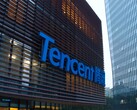Tencent has launched Hunyuan 3D 3.0, the latest version of its AI-driven system for generating three-dimensional models, and the improvements over its earlier release are quite substantial. According to the company, the model achieves three times the accuracy of the previous version and supports resolutions as high as 1536³ with voxel counts reaching 3.6 billion. These technical advances give the system the capacity to generate assets that are considerably more precise and realistic than those produced by earlier iterations, making it more suitable for both experimental and professional use.
The system operates through what Tencent calls 3D-DiT hierarchical carving, an approach that builds objects in stages rather than attempting to render them all at once. The process begins with rough outlines, which are then gradually refined with increasingly detailed layers. This structured workflow helps avoid many of the familiar flaws seen in other AI-generated models, such as distorted facial features, unnatural body proportions, or stiff and mechanical poses.
As a result, the figures created with Hunyuan 3D 3.0 display more consistent human features, skin textures that appear believable, and postures that resemble the way real bodies move. The model is also designed to handle occlusion more effectively, predicting hidden geometry when parts of an object or character are turned away or blocked from view. This reduces the gaps and illogical structures that have often limited the usefulness of automated generation.
The texturing process has also been refined in the same spirit. Earlier AI systems often produced surfaces that looked as if they had been painted on without regard for how they conformed to the object’s form. With Hunyuan 3D 3.0, textures are mapped more accurately to the underlying geometry, so fabric wraps more naturally, skin aligns with body contours, and surfaces no longer appear detached from the structures they are meant to represent. For creators, this translates to assets that require less manual correction before they can be used in production.
Tencent has made the model freely available through its Hunyuan 3D platform, with an API that allows developers to integrate it into their own projects. For professionals who require a more complete toolset, the company is testing Hunyuan 3D Studio, a production suite that supports tasks such as UV mapping, rigging, and skinning. This studio edition is currently offered on an invite-only basis, but applications are open through Tencent’s platform.
Beyond this, Tencent has announced plans to release an open-source version called Hunyuan 3D Omni, which will provide researchers and companies with greater control over model generation and customization, an option that could make the system better suited for industrial and research applications.
















